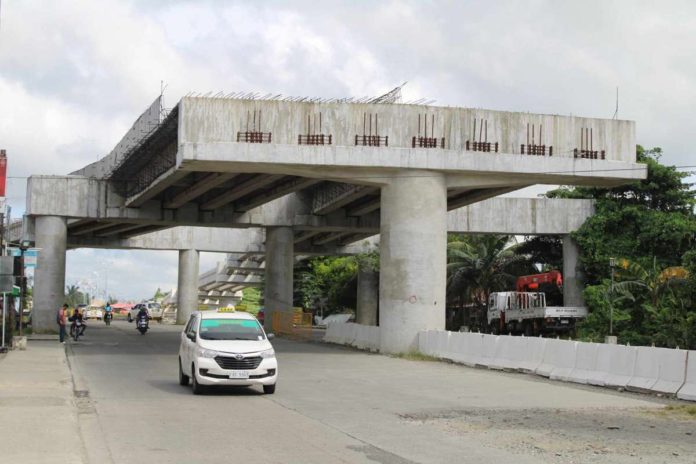
ILOILO – The Department of Public Works and Highways (DPWH) Region 6 is contemplating the use of jet grouting for the P800-million four-lane Aganan flyover in Barangay Aganan, Pavia town, if geotechnical studies reveal issues similar to those found in the nearby Ungka flyover.
The Ungka flyover suffers from vertical displacement; DPWH blames the softness of the soil on which the flyover is standing. It is currently undergoing jet grouting.
According to DPWH-6 director Engr. Sanny Boy Oropel, if the geotechnical study on the Aganan flyover confirms problems similar to Ungka flyover’s, the consulting firm it will tap for the study might recommend applying the jet grouting method, too, to the Aganan flyover.
Work on the flyover – which would be 436.90 meters long including the protection approaches and right of way – was halted on December 2022 following concerns on the stability of the soil on which it is being erected.
What is jet grouting?
Jet grouting is a ground improvement or stabilization method used in construction and civil engineering to strengthen and solidify soil. It involves injecting high-pressure jets of grout (a mixture of water, cement, and sometimes sand or other additives) into the ground to create columns of solidified soil. This technique is particularly effective in enhancing the load-bearing capacity of the soil, reducing permeability, and mitigating hazards associated with unstable ground.
Here’s how jet grouting generally works:
1. Drilling – A borehole is drilled to the required depth where soil improvement is needed.
2. Injection – High-pressure jets of grout are injected through the drill rods as they are rotated and gradually withdrawn. The high-pressure jet erodes and mixes the surrounding soil with the grout.
3. Solidification – As the grout mixes with the soil, it begins to harden, forming columns or panels of reinforced soil. Typically, multiple columns are created in a pattern to form a stable grid beneath the structure. This grid provides increased stability and strength to the existing foundation or the area where a new load is to be supported.
This consideration follows varied soil test results conducted by United Technology Consolidated Partnership (UTCP) and the DPWH-6’s confirmatory and seismic tests on the Aganan flyover.
2 conflicting test results
UTCP, hired by the Bureau of Design of the DPWH-Central Office, conducted initial soil tests and designed both the Aganan and the Ungka flyovers.
Oropel cited significant discrepancies in the soil’s hardness at different depths, which became a basis for pier construction.
According to UTCP data, hard soil was reached at a depth of 24 meters, dictating the depth for the piers. However, DPWH-6’s tests indicated that hard soil was found much deeper, at 40 meters and above.
“We need a (third) consultant to really determine the status of the Aganan bridge because there is a discrepancy between UTCP’s findings and our tests. A consultant will help referee and provide an unbiased perspective,” Oropel said.
Aware of the issues with the Ungka flyover, Oropel expects that the Aganan flyover might face similar challenges, given their proximity and alignment.
Update on Bidding for Third-Party Consultant
Oropel said the pre-qualification stage for hiring a third consultancy firm has concluded, attracting five bidders from Metro Manila. Among these is Abinales Associates Engineers + Consultants, which previously conducted a geotechnical study for the Ungka flyover for P13,480,880.
By the first week of August 2024, the bidders are expected to submit their proposals and bid amounts to determine the lowest bidder.
“Choosing the lowest bidder is advantageous to the government,” Oropel explained.
The winning bidder is anticipated to commence the geotechnical study between the third and fourth week of August 2024, covering the entire stretch of the Aganan flyover.
DPWH-6 has allocated P15 million for hiring a third-party consulting firm to conduct the geotechnical study, which is crucial for assessing the physical properties of soil and rock beneath the surface and determining the most economical methods for any trenchless operation./PN



